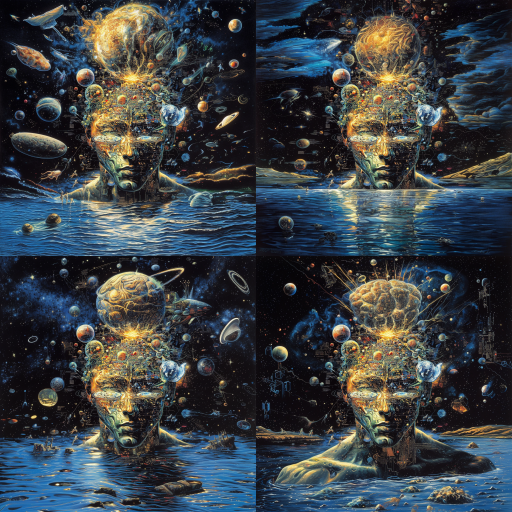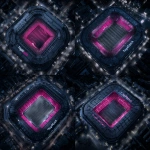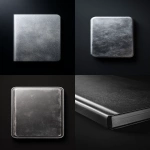Explore the Best AI Image Gallery

Edge Computing in the Creative Industry: Transforming Innovation and Collaboration
In recent years, edge computing has emerged as a revolutionary technology that enhances how data is processed, analyzed, and utilized in various sectors. In particular, the creative industry is harnessing the potential of edge computing to foster innovation, streamline collaboration, and enhance user experiences. This blog post delves into the various applications of edge computing in the creative sector, its implications, ethical considerations, and future trends.
Understanding Edge Computing
Edge computing refers to the practice of processing data closer to the source rather than relying on a centralized data center. This paradigm shift in data management can significantly reduce latency and bandwidth use, making it ideal for industries that demand rapid response times. Creative professionals, such as artists, designers, and content creators, are increasingly leveraging edge computing to optimize their workflows and enhance the quality of their work.
Applications of Edge Computing in Creative Industries
Edge computing has a wide range of applications within the creative field, enhancing various aspects of content creation and delivery:
- Real-time Collaboration: With artists and designers working across different locations, edge computing enables real-time collaboration by reducing latency. Different team members can work on projects simultaneously, making changes in real-time while boosting productivity.
- Augmented and Virtual Reality: Edge computing plays a crucial role in AR and VR applications by supporting low-latency processing essential for immersive experiences. This technology allows creators to produce high-quality content that users can interact with in real-time, enhancing storytelling and engagement.
- Smart Devices and IoT: The integration of edge computing with IoT devices enables creative professionals to gather and analyze data more efficiently. For instance, musicians can use smart instruments that harness edge computing to process sound inputs in real-time, leading to a more interactive performance.
- Content Distribution: Content delivery networks (CDNs) benefit greatly from edge computing as it allows for local caching of content closer to users, improving streaming quality. This approach enhances user experience while freeing up bandwidth for other tasks.
Impact on Innovation
The implementation of edge computing within the creative sector is serving as a catalyst for innovation. Here are several ways it is impacting creative professionals:
- Enhanced Creativity: By processing data closer to the source, artists and designers are empowered with quick access to computational resources, which opens up new avenues for experimentation. This leads to innovative projects that blend traditional art forms with cutting-edge technologies.
- Personalized Experiences: Edge computing allows for the collection of user data to create tailored experiences. For instance, through machine learning algorithms running on edge devices, brands can deliver personalized content to users based on their preferences and behaviors.
- Cost Efficiency: By minimizing the need for extensive data transfer and storage, edge computing reduces operational costs. For startups and independent creators, this can be a game-changer, allowing them to allocate resources to other critical areas of their projects.
Ethical Considerations
While the benefits of edge computing are clear, its integration into the creative industry raises ethical questions that must be addressed:
- Data Privacy: With increased data collection comes heightened concerns about privacy. Creative professionals must ensure that user data is handled responsibly, especially when it involves creating personalized experiences.
- Intellectual Property: As edge computing enables collaborative environments, questions about ownership and rights to shared work arise. It is essential to establish clear agreements about authorship and usage rights in cooperative projects.
- Access to Technology: There is a risk that edge computing may widen the digital divide. Ensuring equitable access to technological resources is essential to avoid leaving behind those in underserved communities.
Future Trends in Edge Computing and Creativity
As edge computing continues to evolve, its influence on the creative industry is expected to grow. Some emerging trends to watch include:
- Integration with AI: The marriage of edge computing and AI can lead to smarter creative tools capable of enhancing artistic processes. AI algorithms can analyze and offer suggestions based on user behaviors or preferences, making creative workflows more efficient.
- Increased Interactivity: With edge computing facilitating real-time data processing, creative applications will become more interactive. Users will be able to engage with content in novel ways, leading to immersive experiences.
- Sustainability: As environmental concerns grow, edge computing could provide sustainable solutions by reducing energy consumption related to data transfer and processing. Creative enterprises that embrace these technologies responsibly will likely resonate better with conscientious consumers.
Conclusion
In conclusion, edge computing is set to redefine the creative industry, delivering unprecedented opportunities for innovation, collaboration, and enhanced user experiences. As artists and creators embrace this technology, they will not only elevate their own work but also contribute to a dynamic and interconnected creative landscape. It is crucial, however, to navigate the ethical implications of this evolution to ensure that creativity flourishes while maintaining respect for users and their data.







](https://images.ai-img.art/thumbnails/150/3ccc82ef0ad0cc1ab1dfb5b8e6bc37924fcad45dadf41cbd1cb21d19fc7f640a.webp)


](https://images.ai-img.art/thumbnails/150/807ac97f95d56e8cc7cf714e13299d80bf6bcb5b4d80b77a7f06f30246184943.webp)





](https://images.ai-img.art/thumbnails/150/fc468fe14407b96489933a55227127071fd5f6c0505be74ca4dcb2f1e2fa3771.webp)
](https://images.ai-img.art/thumbnails/150/83ec831b9fb19e0db5a520b051b9556f3f594b87acc957ffee094a06a565e6f0.webp)







](https://images.ai-img.art/thumbnails/150/738b292720ee21b57673dfb75ad851f4c34d16f5006ae3027ba685feaddb6b04.webp)

](https://images.ai-img.art/thumbnails/150/05b3252b3f681226a3df9027b069db31c005f91b72257a74367c4102f03a2ba0.webp)
](https://images.ai-img.art/thumbnails/150/57afc09cc38edf73880f760b7ebe1852c5522c6b4051836717b2e56b6f7f913c.webp)





](https://images.ai-img.art/thumbnails/150/69d81ae5ecde297f3c11da78435c5fc00fbac7b00e2c7ccd89d7bbeb014e0541.webp)










](https://images.ai-img.art/thumbnails/150/908bcb9950a44fd4b37d1a84cf00178988cea9507738d7ad4f92707c692461ef.webp)
